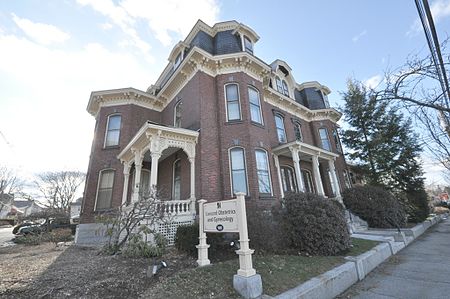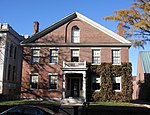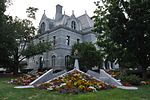Henry J. Crippen House
Houses completed in 1879Houses in Concord, New HampshireHouses on the National Register of Historic Places in New HampshireNational Register of Historic Places in Concord, New HampshireSecond Empire architecture in New Hampshire

The Henry J. Crippen House is a historic two-family house at 189-191 North Main Street in Concord, New Hampshire. Built about 1879, it is one of a dwindling number of little-altered surviving Second Empire residences on the city's Main Street. Now converted to professional offices, it was listed on the National Register of Historic Places in 1983.
Excerpt from the Wikipedia article Henry J. Crippen House (License: CC BY-SA 3.0, Authors, Images).Henry J. Crippen House
Pearl Street, Concord
Geographical coordinates (GPS) Address Nearby Places Show on map
Geographical coordinates (GPS)
| Latitude | Longitude |
|---|---|
| N 43.2125 ° | E -71.540555555556 ° |
Address
Pearl Street 48
03301 Concord
New Hampshire, United States
Open on Google Maps










